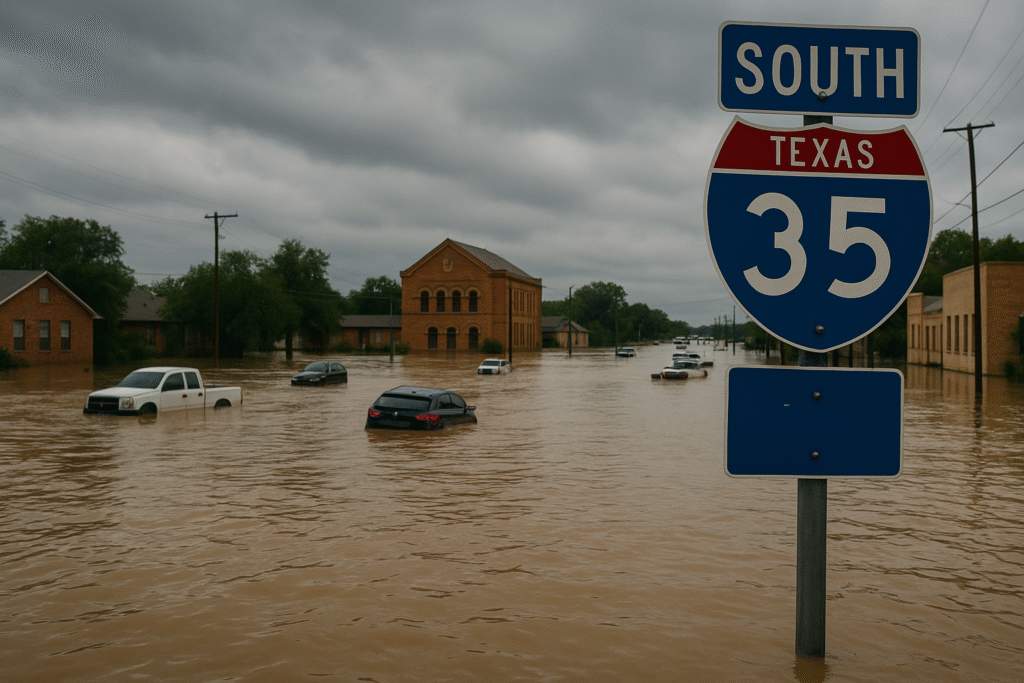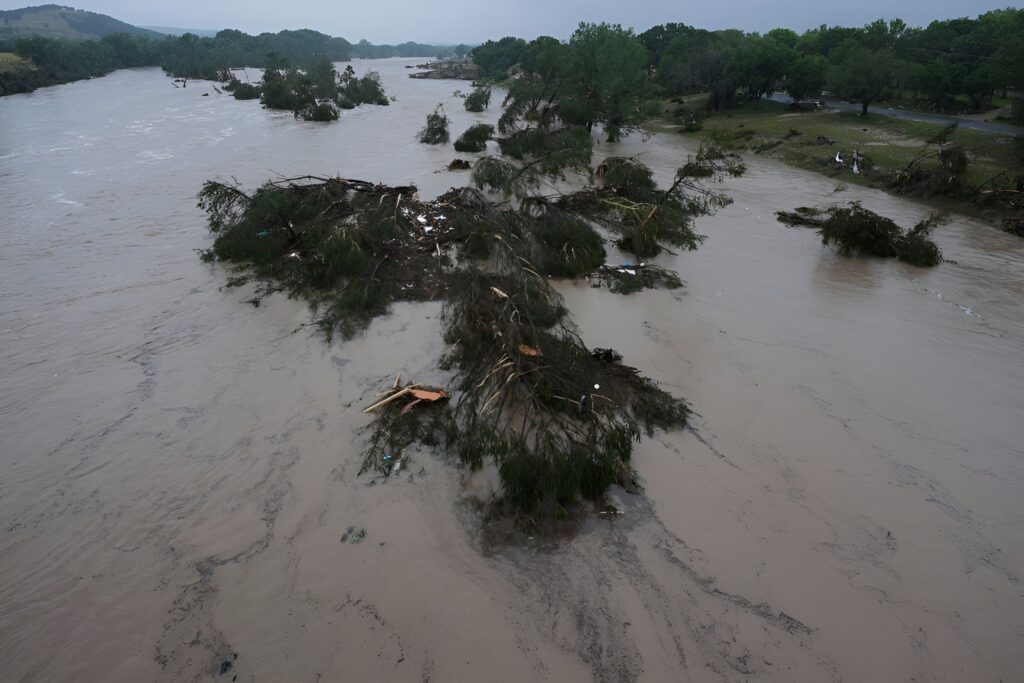
Record-breaking flash floods in Texas have claimed over 100 lives in July 2025. It is thought that many people are still missing, and at least 118 have lost their lives due to the Texas disaster and floods that hit the Hill Country region of Texas. The large number of missing people shows that the full impact of the Texas disaster is not yet clear five days after it happened. Learn how extreme weather, weak infrastructure, and climate change contributed to this deadly event.
Texas Under Water: A Tragedy Unfolds
July 2025 will go down in history as one of the worst months in Texas.
Heavy rain caused deadly flash floods, especially in Central and Southern Texas, resulting in over 100 deaths, displacing thousands, and submerging cities like San Antonio, Austin, and Waco.
Most Affected Areas
The areas hit hardest include
- San Antonio—Whole neighborhoods were underwater
- Waco—Floodwaters destroyed bridges and cars
- Austin— A state of emergency was declared as power systems failed
- New Braunfels – The river overflowed, causing over 20,000 people to be evacuated
- Search and rescue operations are ongoing as National Guard and FEMA teams work hard to reach people stuck in hard-to-reach places.
⚠️ Why Was This Flood So Severe?
Experts point to a combination of factors:
| Causes | Impacts |
|---|---|
| 🌧️ Record Rainfall | Poor drainage in overbuilt zones worsened the impact. |
| 🏙️ Urban Sprawl | Poor drainage in overbuilt areas worsened the impact. |
| 🌡️ Climate Change | Warmer air have more moisture, fueling storms |
| 🧱 Aging Infrastructure | Dams and levees are overflowed |
Meteorologists say this was a “1-in-1,000-year event,” but they also warn that such big disasters might happen more often in the future.
Eyewitness Images (Optional for Blog)

- Broken bridges
- Homes and cars under water
- Rescues by helicopter
- Roads flooded in Austin and San Antonio
- Human Impact
- Texas disaster
- More than 100 people have died, and many are still missing
- Hospitals are full with injuries from the flood
- Thousands have had to leave their homes and are staying in temporary shelters
- Families are going through a mental health crisis after losing their homes, jobs, and loved ones
How Authorities Are Responding
- The governor has declared a state of emergency due to the Texas disaster
- FEMA has sent mobile hospitals and supplies
- The president is expected to visit Texas soon
- Fundraising and charity groups across the U.
S. are helping with relief efforts
What It Means for the Future
- This problem is not just a local issue—it’s a sign that bigger problems might come for the whole country.
- Experts suggest:
- Putting money into strong and safe buildings and systems
- Making plans to deal with climate changes in all big cities
- Teaching people how to be ready for emergencies
- Creating better maps for floods and systems to warn people early
What You Can Do
- Give money to reliable groups helping with relief
- Talk about what’s happening to help others learn
- Make emergency kits and plans for your family
- Help push for policies and actions that protect against climate dangers
Search Intensifies as Texas Flood Death Toll Rises
The search is getting more urgent as the floods in Central Texas cause more deaths. By mid-July, these floods had become one of the worst natural disasters in Texas in recent years. The number of confirmed deaths has gone past 145, and more than 100 people are still missing, mostly in Kerr County and nearby areas of the Hill Country. Officials are working nonstop to find survivors in the Texas disaster, with help from federal agencies and even teams from Mexico.
At Camp Mystic, which became a major site of tragedy during the flood, 27 campers and staff were found dead after the Guadalupe River rose almost 30 feet in just one hour, causing damage to cabins and other facilities. This problem got worse when leftover moisture from a tropical storm brought more rain to areas that were already very wet, leading to new flood warnings in the East Texas disaster.
Even though the weather is starting to get better, the land is still dangerous for rescuers to work in.
Final Thoughts
The historic Texas disaster of 2025 is more than just a local problem—it’s a big national issue and a warning about the climate. As Americans, we need to unite to help the people affected by the Texas disaster and take steps to stop future disasters from happening.
What caused the Texas disaster?
The flooding was triggered by an extreme rain event over Central Texas, particularly in the Hill Country. Torrential rainfall caused the Guadalupe River and other water bodies to rise rapidly—up to 29 feet in under an hour—resulting in flash floods.
How many people have died or are missing?
As of now, over 145 fatalities have been confirmed, and approximately 100 people remain missing, with Kerr County being one of the hardest-hit areas.
What areas were most affected?
Kerr County, Hunt, and the surrounding Hill Country experienced the worst damage. Camp Mystic, located near the Guadalupe River, was the site of a tragic loss involving dozens of campers and staff.



